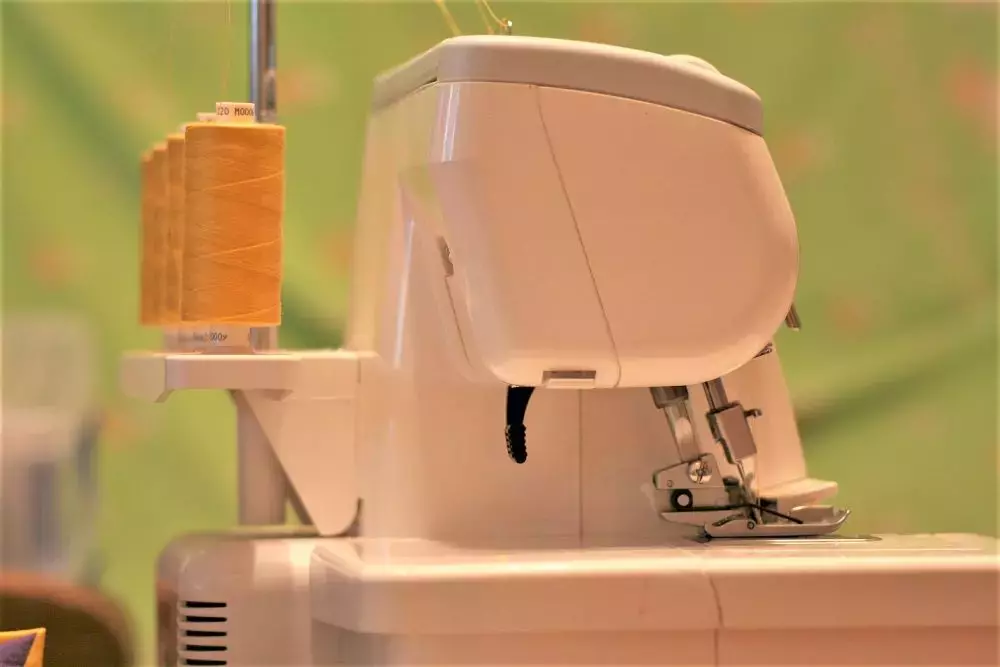Overlock, Serger, or Coverstitch? What’s the Real Difference?
2019-11-08
Serger, or Overlocker? It really puts the Shakespearean question of, "Would a rose by any other name smell as sweet?" to the test because they're the same thing.
The term "serger" is more American, whereas in the UK and even in Australia, crafters typically refer to this machine as an overlocker. So, now that we have that cleared up, let’s ask a different question. There is no difference between an overlocker and a serger, but what do they do?
What is an Overlocker/Serger?
An overlocker or a serger act more like knitting machines than sewing machines. They trim and bind seams to the fabric itself so that it doesn't unravel. It's great for working with cotton that pulls apart easily and especially for garments. In fact, you basically must have a serger for a professional finish on your garment seams.
However, you can also use a serger to spiff up your outside seams or hems. These machines seem really complex at first, and if you're still getting used to sewing machines, then you will need to take it really slow with a serger. Get used to the machine and get comfortable with it because it will take three if not four pathways for threading and two loopers. The effect is you’re knitting (or serging, or overlocking) with thread, over a fabric.
Sergers also get very fancy and cut your seams for you. Meaning your days of carefully measuring out seam allowances every few inches can come to an end if you have a steady hand.
It is important to note that a serger or overlocker does not replace a sewing machine. Sewing machines play a pivotal role in every project, but sergers can too.
What is a Coverstitch Machine?
A coverstitcher is essentially a finishing machine, and that seems like what a serger is, but there’s a little more to it. Seamstresses have been avoiding knit garments for ages because they stretch, warp, move, and overall are a pain. Now, a serger can’t solve that problem. But a coverstitcher can help.
Coverstitchers are great for handling stretchy fabric and can also create stretchy seams. You read that right, stretchy seams. Coverstitch machines also handle difficult tasks such as attaching lace, using elastic, and adding trims. They do it all again with a stretchy seam that won't compromise the integrity of the lace or trim. When you get really handy with a coverstitch, you can even use it for your bindings.
Simplicity and Versatility
Coverstitch machines seem like the top choice because there isn’t a lot of complicated threading. There are up to three needles on some machines, but like many sewing machines, coverstitchers can often work with one needle. A lot of the versatility comes with knowing your machine.
Start simple and then work your way into trying some of the two-needle configurations. With a coverstitcher, you can do any manner of hems, chain stitches, and even decorative stitches. The good news is that even as you get more comfortable with your machine, it stays simple. While there are more needle configurations, there are also a few additions that you might be more familiar with, such as a gathering foot, feller, or belt looping folder.
Can You Have It All?
Yes, you can, and truth be told, you need both. There are machines that do both, and they're usually called a combo machine, meaning a combination of a serger and a coverstitch. However, many sewers prefer to have two separate machines. Not only because it can help to switch between the two quickly, but because with more moving parts, there's more risk for something to go wrong.
A combo model is a great choice for anyone on a budget who really can't afford to splurge on two machines. Or for someone who can quickly and easily adjust from one system to another, which isn't something that everyone can do.
Whether you are looking for an overlock/serger or need a coverstitch machine, GoldStar Tool has plenty to choose from. If you can’t find what you are looking for, or need help deciding, contact us and will elp you make the right choice!





